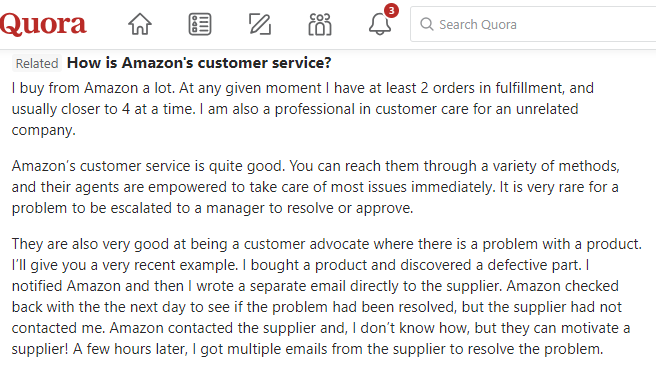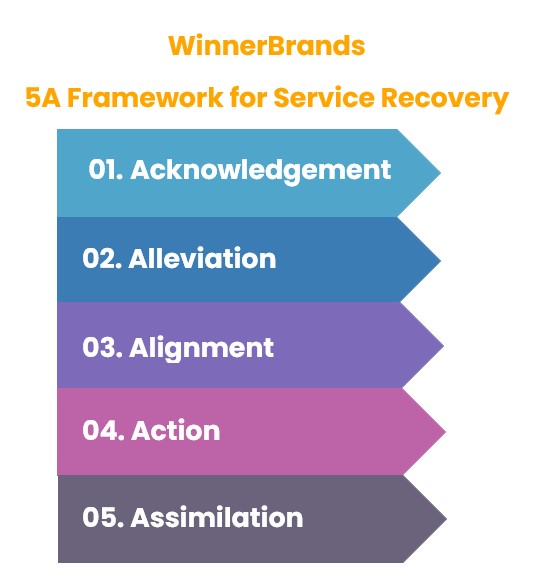For any brand, customer complaints and service slip-ups sound like a nightmare. However, they often don’t realize that every crisis is also a potential opportunity to deepen the bond with consumers.
It sounds counterintuitive, but if resolved promptly and courteously, a problem precipitated by the brand could make customers fans for life. In fact, academic researchers call this phenomenon the ‘Service Recovery Paradox’- a situation in which post-recovery brand satisfaction is greater than the satisfaction before the service failure!
A good service recovery can benefit the brand in more ways than one. It makes consumers confident of the brand’s integrity, fairness and consumer commitment. When consumers feel that the brand has their back, they are more confident in posing their trust in it. It raises the barriers to switching and builds brand loyalty.
Also, from the emotional turmoil created due to a service failure to the emotional high when an unexpectedly smooth resolution saves the day, the service recovery cycle is a rollercoaster of an event from the consumer’s point of view (POV).
This naturally leads to ‘brand stories’- a good recovery experience ensures that the brand is projected as a hero in these stories.
Finally, every service recovery episode is a learning for business. It reveals the areas of improvement- the loopholes and vulnerabilities. It, therefore, helps to make the overall brand offering more delightful and predictable.
Ensuring that service recovery delivers these benefits requires a systematic and methodical approach. Having a great service intent is a good beginning but isn’t enough.
Traits of a good service recovery mechanism- a consumer's POV
When consumers feel they have been wronged, they expect justice. From a consumer’s point of view, a service recovery experience that delivers on the below five criteria fosters the feeling of fair treatment:
Prompt
This is hygiene. When consumers face an issue, they expect to be promptly attended and listened to. Revert within well-defined TAT, availability of 24×7 assistance and quick first response give confidence that the issue will be resolved and help to avoid snap judgements.
Professional
The service recovery mechanism should come across as professional- from the tonality of the first responder (that could be a person, IVR or Chatbot) to the proposed resolution process. An insight into the process reassures consumers that their concerns will be taken care of professionally
Predictable
The process should induce positive predictability. Consumers should know what will happen next and by when. Predictability eliminates residual skepticism and sets the ground for a great service recovery experience
Perceptive
Rather than becoming crammed and repetitive, a good recovery mechanism should be able to understand what consumers are going through and mould responses accordingly. Empathy, patience and resonance with consumer’s issues and emotions can become the core delight factors during service recovery.
Proportionate
Finally, consumers expect compensation that’s in line with the gravity of the issue they have faced. And this may not necessarily include only monetary loss. In many cases, they also expect compensation for negative emotional and social impact. Hence, recovery mechanisms that solely focus on monetary compensation may not be adequate to create delight.

How can brands deliver this experience?
A service recovery process essentially comprises five steps, and Brands should ensure that they address all of them:

#1 Acknowledgement
The first step in any service recovery process is to assure consumers that the brand acknowledges that there is a problem- and that it is ready to do what it takes to rectify it. Consumers often connect with support channels in anger and agony, and irate customers require sensitive handling. Brands need to delicately balance empathy with tact and diplomacy.
#2 Alleviation
At this point, the brand should explain its point of view and propose a resolution. Suppose the customer’s complaint is clearly out of the way or in violation of the company’s policies. In that case, it can politely explain why the company cannot resolve it and offer reconciliatory measures. Alleviation must be commensurate with the issue’s impact and reflect the brand’s sincerity towards its customers.
#3 Alignment
It is important to clarify clear next steps with a specific timeline for executing them. Consumers should exit the session with clarity on what is the process going forward, what they are going to get (replacement, refund, another call, a ticket number…) and how & when they will get it (will the message come in SMS or WhatsApp? money will reflect in the wallet or bank account?)
#4 Action
The brand must ensure it lives up to its commitment and takes the process forward. It is important to maintain effective communication with customers during this process, proactively intimating them about any delays. Along with resolution, the brand may also add a delighter by sending a personalized and heartfelt apology note and/or an offer on the next purchase.
#5 Assimilation
Once the issue has been resolved, the brand needs to take a long and hard look at the process and analyze what went wrong and why. The learning from the process needs to be properly documented, and corrective measures must be implemented to avoid the recurrence. If customers aren’t happy with the closure, the brand needs to relook at the process of resolution and launch interventions to better it- this could include tweaking the refund policy, improving internal communication or providing better training to the support team.
Some watchouts
While service recovery is a great opportunity to create delight, a few caveats are in order.
Occasional slip-up, if handled well, creates love and satisfaction. But if the issue becomes recurring, no amount of service recovery can create delight. Hence, the last step in service recovery- ‘Assimilation’- is extremely important to leverage the goodwill accruing from great service recovery.
Some companies use monetary compensation as a silver bullet to handle all service slip-ups. They liberally offer freebies, discounts and coupon codes as compensation, hoping that these would assuage irate customers and keep them loyal. However, as the consumer narrative shows, the costs of brand slip-ups are well beyond monetary. A recovery experience that doesn’t balance feelings and freebies can never create delight.
At times, a company doesn’t even acknowledge a customer’s complaint on the official channel but starts a frantic bout of outreach once the same grievance has been placed on a public forum (say LinkedIn, Twitter, etc.)- tagging founders and senior management. Rather than customer concern, such an action reveals service apathy and becomes a desperate attempt at damage control.
In any case, enthusiastic service recovery teams calling a customer repeatedly for the same problem is best avoided. More often than not, these calls accrue from gaps in internal processes and communication than any concern towards customers per se. Customers end up explaining their stories to multiple representatives without any resolution in sight. This can make them lose confidence in the service recovery.
Finally, a delightful service recovery doesn’t mean the brand needs to pander to every customer demand. There are instances when customers are unreasonable, and at times, they escalate issues to simply game the system. The service recovery mechanism should be robust enough to segregate grain from chaff and ensure that service orientation doesn’t translate into an undue monetary loss. If required, the brand shouldn’t desist from politely putting across its point of view, taking it as an opportunity to clarify its policies.
In Conclusion
If executed well, service recovery can be a great way for a brand to create vocal advocates. A good service recovery experience feels humane, personalized and empathetic while being adequate and responsive.
Ease of reaching the brand, speed of issue handling, promptness of follow-ups, attention to detail and clean closure can truly turn a service recovery incident into an opportunity to strengthen the consumer relationship.
Sources
Leverage the power of top marketing talent
WinnerBrands helps organizations hire top marketing talent.
Be it performance marketing experts, content specialists, creative directors, designers, video editors or brand managers, we can help you find the right marketing talent to unlock your brand’s potential.
Run by marketers for the marketers, we are already a preferred marketing talent partner for both established conglomerates and agile startups.
WinnerBrands can serve as the one-stop solution for all your marketing talent hires, offering you complete flexibility to engage this talent in your preferred engagement format-
- Full-time (on your payroll)
- Contractual (on our payroll)
- Or on a freelancing basis.
So, if you are looking to onboard the best marketing talent, vetted by industry experts, in the shortest possible time, then WinnerBrands is your go-to place.
Talk to our founders and explore smarter ways to hire marketing talent by clicking here
Cheers,
Team WinnerBrands
